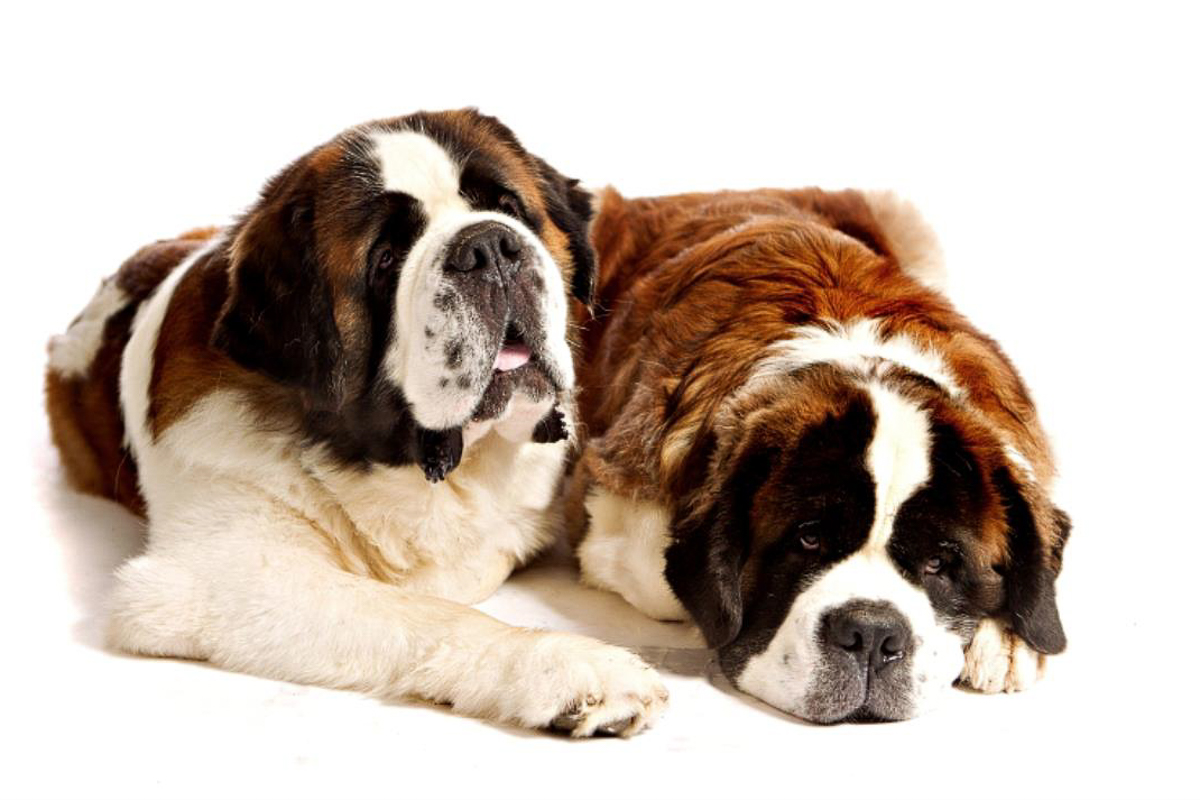The Breed
Origin
Credited with saving more than 2,500 travellers lost in the snow, this breed was named for the Hospice du Grand St. Bernard in Switzerland, where the monks have bred these large dogs since the 17th century. It seems probable that the Saint developed from the heavy mastiffs brought to Switzerland by the Roman armies during the first two centuries AD, which then bred with local dogs. Because of the isolation of the Hospice, the original stock was undoubtedly inbred and produced the distinctive ‘Hospice Dog.’ When the monks took the dogs along with them, they quickly learned the canines’ sense of smell was invaluable in locating lost travellers overcome in the snow. Thus began a working relationship that endured for centuries. Up until 1830, all Saints were short-haired, but when the breed was struck with disaster and distemper, the Newfoundland was crossed with the Hospice Dog to give size and strength to the breed. The cross also produced the first long-haired Saints.
Temperament
Good-natured and kindly, the Saint is a relatively easygoing dog with a gentle nature. The breed is especially understanding and lovable with children.
Activity Level
This giant breed tends to take life easy but it requires lots of room, both indoors and out, plus regular daily exercise. Height/Weight The minimum height for a Saint is 27½ in (70 cm) at the shoulder for a male and 25½ in (65 cm) for a female.
Coat
There are two coat types in this breed. The original is the short-haired, which is dense, smooth and tough. The long-haired or rough variety carries a coat of medium length, which is straight to slightly wavy.
Colour
The coat may be white with red or red with white. White markings are on the chest, feet, tip of the tail, head and neck are essential.
Grooming
Both coats benefit from regular, thorough brushing. Eyes should be checked regularly and gently cleaned as necessary.

